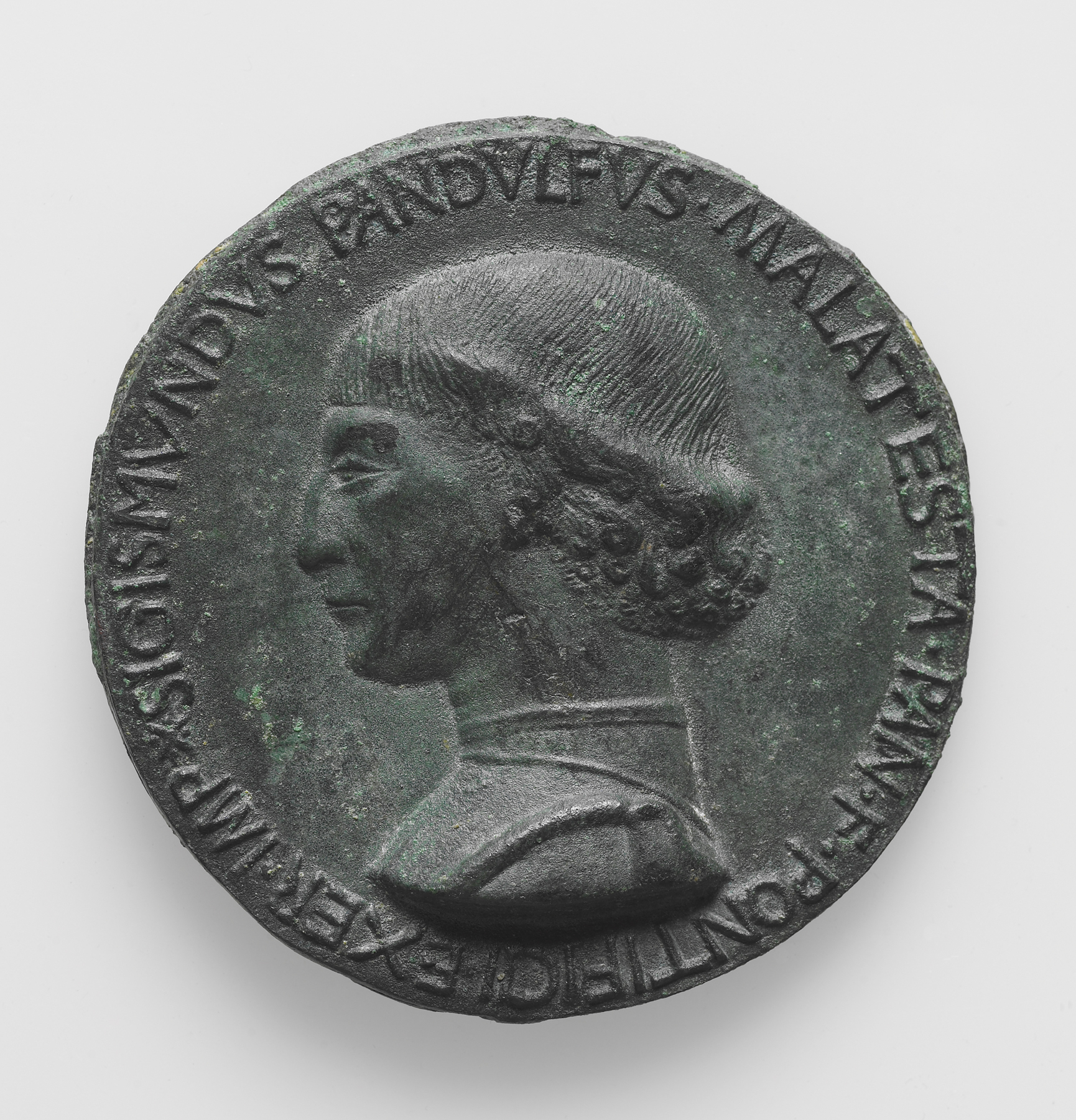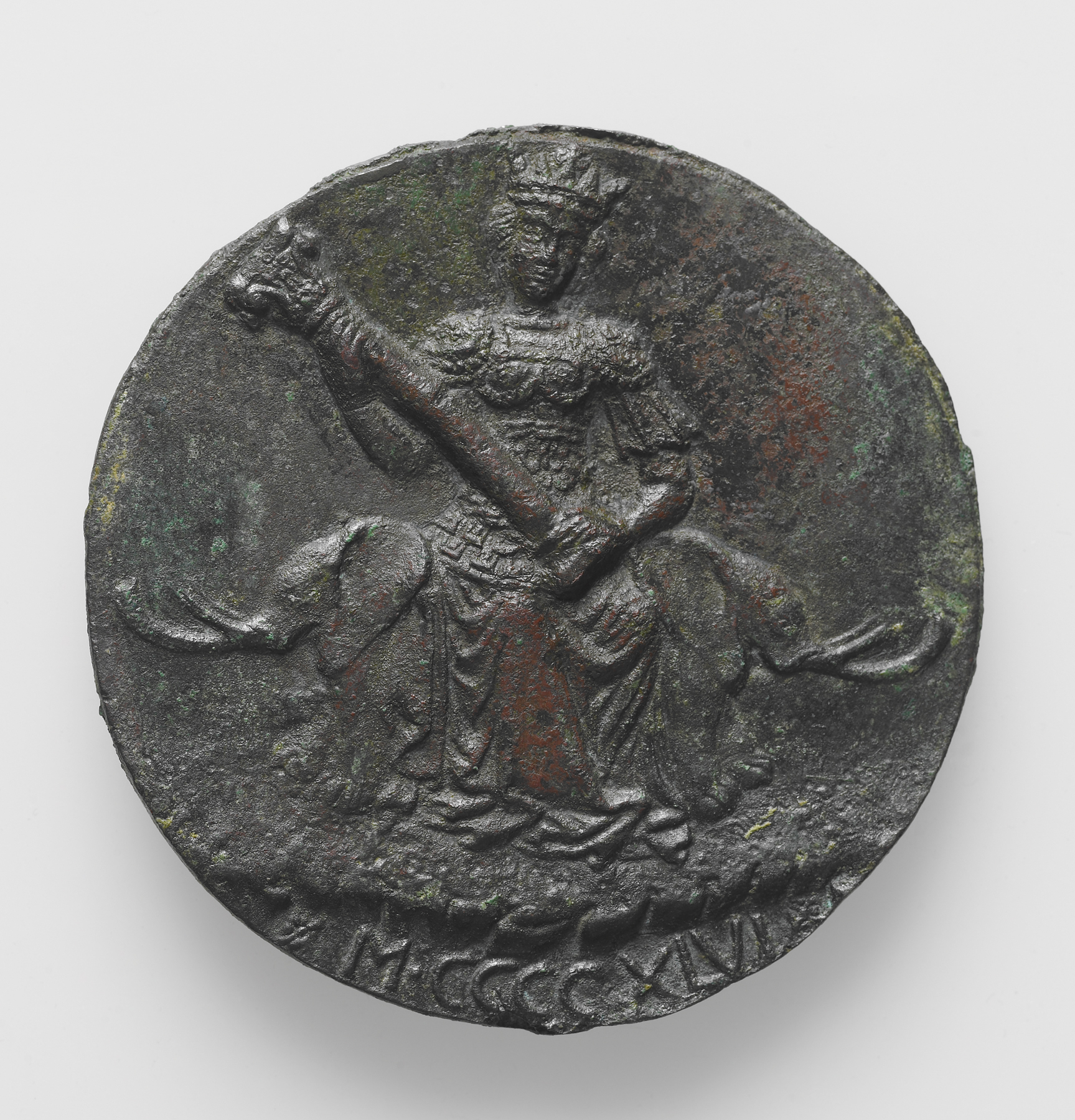Portrait Medal of Sigismundo Malatesta
(Renaissance Europe )
This medal was commissioned by Sigismondo Malatesta (1417–68), lord of Rimini and Fano in eastern Italy. It follows the format of portrait medals that became popular by the mid-1400s that imitated Roman imperial coins, with a stern profile of authority on the front and a personal emblem on the back. The likeness is modeled in low relief. Taking advantage of the flexibility of the manufacturing process, the medal was produced with different reverses and inscriptions. His domains were not large, but Sigismondo was an effective general and realized that portrait medals were good as presents for potential allies.
This particular medal was discovered in an excavation, and the bronze has corroded from being underground, resulting in a green, somewhat mottled surface. It is inscribed on the front: "SIGISMVNDVS PANDVEVS . MALATESTA . PAN[dulfi] F[ilius]. PONTIFICII . EXER[ ] IMP[ ]" (Sigismondo Malatesta, son of Pandolfo, commander of the papal army); and on the back with the date
Inscription
Provenance
Provenance (from the French provenir, 'to come from/forth') is the chronology of the ownership, custody, or location of a historical object. Learn more about provenance at the Walters.
Deposition at Rimini, 1961. Acquired by Paul Drey Gallery, New York, 1961; purchased by Walters Art Museum, 1962.
Exhibitions
| 1995 | The Allure of Bronze. The Walters Art Gallery, Baltimore. |
Geographies
Italy, Verona
(Place of Origin)
Italy, Rimini (Place of Discovery)
Measurements
Diam: 3 3/16 in. (8.1 cm)
Credit Line
Museum purchase with funds provided by the Sales & Accessions Purchase Fund, 1962
Location in Museum
Accession Number
In libraries, galleries, museums, and archives, an accession number is a unique identifier assigned to each object in the collection.
In libraries, galleries, museums, and archives, an accession number is a unique identifier assigned to each object in the collection.
59.716




